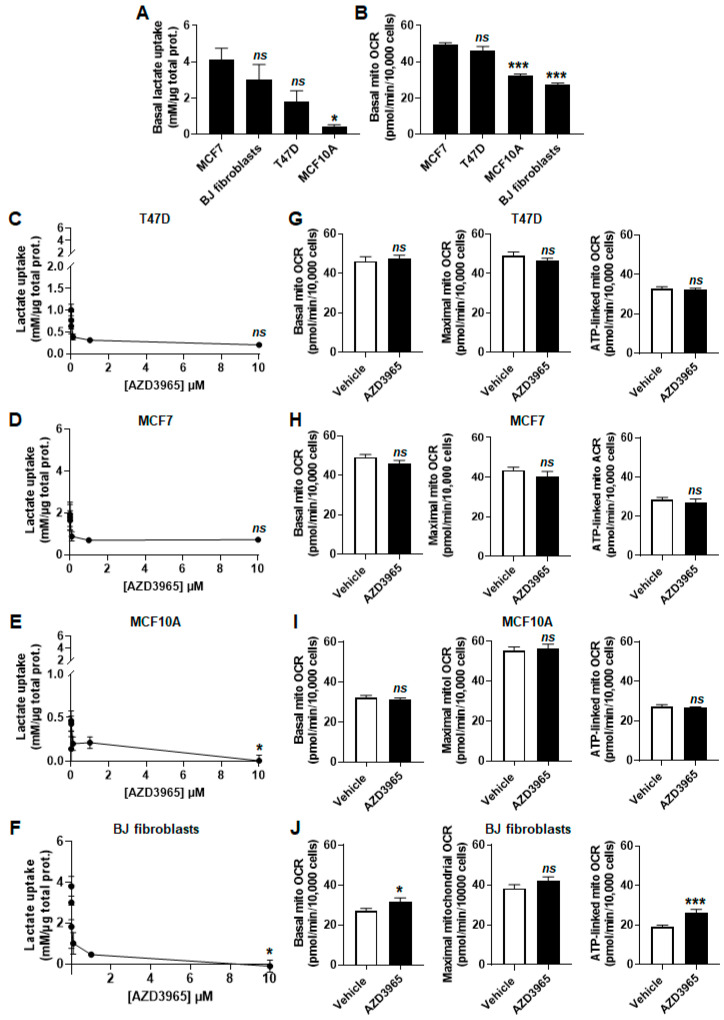Figure 1.
Malignant and nonmalignant cells representative of the breast consume lactate. (A–J) Cells were metabolically characterized in medium containing 10 mmol/L sodium L-lactate, no glucose, no glutamine and 1% FBS. (A) Lactate uptake over 24 h by untreated MCF7 and T47D human breast cancer cells, BJ normal human fibroblasts and MCF10A nonmalignant human breast epithelial cells (n = 3–9). (B) Basal mitochondrial oxygen consumption rate (mito OCR) of untreated MCF7, T47D, MCF10A cells and BJ fibroblasts (n = 11–22). (C) Lactate uptake over 24 h by T47D cells exposed to increasing concentrations of MCT1 inhibitor AZD3965 (n = 3). (D) As in C, but using MCF7 cells (n = 8–9). (E) As in C, but using MCF10A cells (n = 3). (F) As in C, but using BJ fibroblasts (n = 3). (G) Basal mitochondrial oxygen consumption rate (mito OCR; left panel), maximal mito OCR (middle panel) and mito OCR linked to ATP production (right panel) of T47D cells treated for 24 h ± 10 µmol/L AZD3965 (n = 9–12). (H) As in G, but using MCF7 cells (n = 22–24). (I) As in G, but using MCF10A cells (n = 12). (J) As in G, but using BJ fibroblasts (n = 11). All data are shown as means ± SEM. * p < 0.05, *** p < 0.005, ns p > 0.05 compared to MCF7 (A–B) or to vehicle (C–J); by one-way ANOVA followed by Dunnett post-hoc test (A–F) or Student’s t test (G–J).

